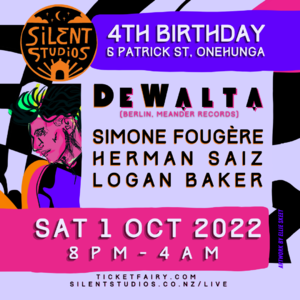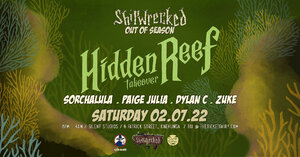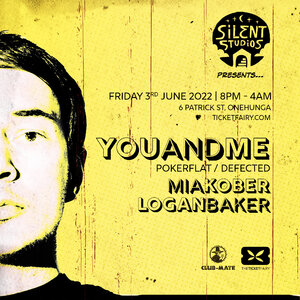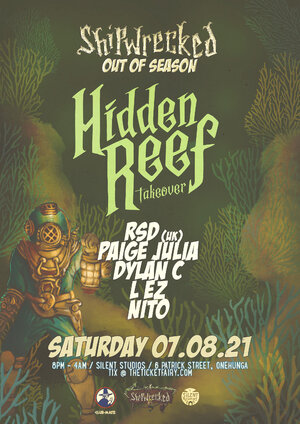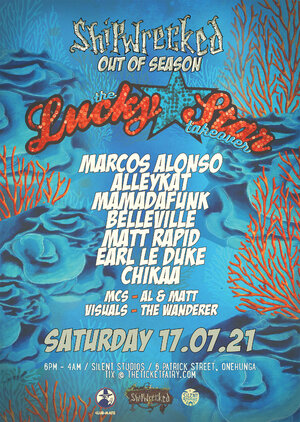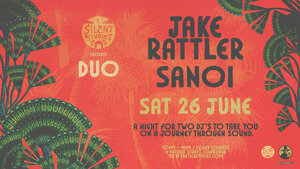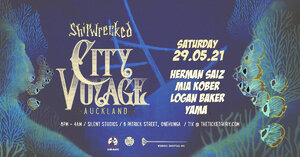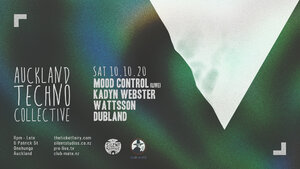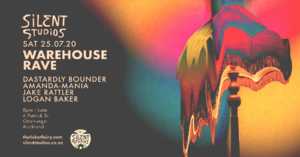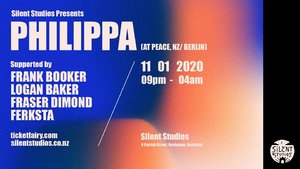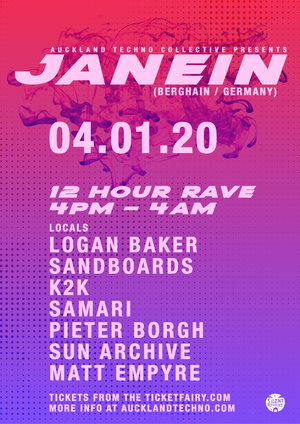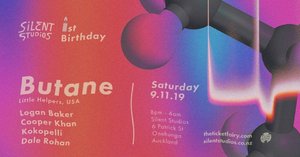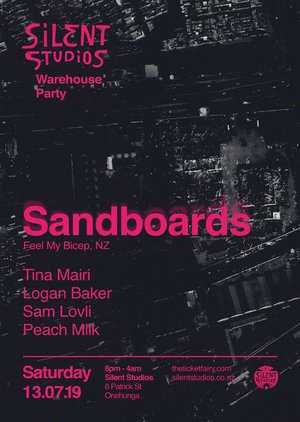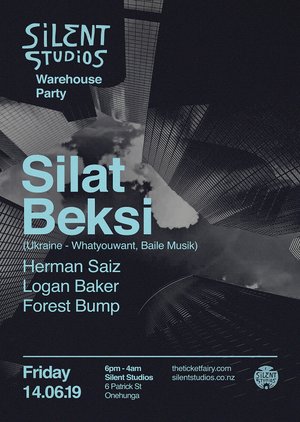About Silent Studios
Silent Studios is a boutique electronic music venue housed in a reclaimed warehouse at 1/6 Patrick Street, Onehunga (southwest Auckland) (silentstudios.co.nz ). Founded by Logan Baker in late 2018, it grew from “just an idea, an empty space and a plumbing company” into a creative club space built almost entirely by the founders and community volunteers (silentstudios.co.nz ). The interior is industrial-chic, decorated with local art pieces and its own open-air courtyard. A key feature is the high-end audio rig – a Funktion-One and TurboSound sound system – paired with professional lighting and visuals (silentstudios.co.nz ). The venue is designed to allow loud music while avoiding any noise complaints, thanks to solid insulation and careful neighbors. Because it’s privately built and run by enthusiasts, Silent Studios has a grassroots, community feel. In spite of its small size, it has already hosted some of the world’s top underground DJs – for example Traumer, Clive Henry, Steve Bug and Italy’s Dani Casarano – as well as leading local acts like Mood Control, Out of Sorts and Logan Baker himself (silentstudios.co.nz ). This makes it notable for punching above its weight: it brings club-level sound and international talent to a neighborhood that previously had few places for late-night dance parties. The venue celebrated its fourth anniversary in October 2022 (silentstudios.co.nz ), underscoring its rapid rise as a key player in Auckland’s dance music scene.
Events and Programming
Silent Studios specialises in electronic dance music parties, typically on weekend nights. Events range from local DJ showcases to themed multi-day “weekender” raves. For example, in mid-2023 the club ran a two-night event with drum & bass on Friday and house/techno on Saturday (www.undertheradar.co.nz ). In May 2023 they held special NZ Music Month parties (Friday was Bass night, Saturday was House & Techno) (silentstudios.co.nz ). Recurring fixtures include winter “Locals Weekender” parties and summer “Shipwrecked” pirate-themed events, as well as anniversary shows. Lineups balance international DJs (often from Europe or the US) with top Auckland talent and collectives. Past visiting artists have included Berlin techno DJs, UK house acts, and many of New Zealand’s finest producers. Because the crowd size is kept relatively intimate (a few hundred people), the vibe is energetic and communal. Cover charges reflect the niche appeal: typical ticket prices run roughly NZ$20–30 early and can reach $30–40 later, with occasional higher-value “supporter” tiers in the mid-$40s (www.ticketfairy.com ) (www.ticketfairy.com ). Many events do sell out, so it pays to buy tickets in advance.
Tickets and Booking
Tickets for Silent Studios events are generally offered only through official channels. The venue’s website or social media will link to an authorised ticketing page when a show is announced. In practice, most tickets are sold online (for example via Flicket or TicketFairy) – there is usually no walk-up box office at the door. Fans should monitor the Silent Studios announcements for presale dates. Popular events often advertise that “tickets will sell out” and indeed many nights – especially with high-profile DJs – reach capacity in advance (www.ticketfairy.com ). Pricing tiers vary; for instance a late-2024 event showed an early GA ticket at NZ$22 (inclusive of fees) (www.ticketfairy.com ), a late GA at $33, and a “supporter” tier around $44 (www.ticketfairy.com ). In every case, note that Silent Studios is fully licensed – outside alcohol is never allowed. (“No BYO: the venue has a fully stocked bar” (www.ticketfairy.com ).) There are no reserved seats or tables – entry grants general admission and you stand or sit wherever there’s space. Box office sales at the venue are uncommon, so if a show isn’t marked sold-out when you arrive you can often buy right at the door, but always at the higher late price.
Seating and Layout
Silent Studios does not have fixed seating: it’s basically one big open floor. The main dance area faces the DJ booth and sound system at one end of the hall. Because the stage is only slightly raised, the best view is by standing on the floor near the front. Many people also like to watch from the sides or rear of the hall where it’s a bit less crowded. Behind the dance floor is the bar and some bench seating along the walls. Uniquely, the venue also has an adjoining outdoor courtyard (fenced but open at the top). In good weather this beer-garden area becomes part of the party: it has tables and benches and people often step out there to cool off. Acoustically the courtyard is quieter, but you can still hear the music through the open door. In short, everything at Silent Studios is general-admission and standing-room. There are no VIP booths – at most a small side table for event staff. If you want the full experience, grab a spot on the dancefloor or a seat in the courtyard; either way you’ll have a good view of the action.
Getting There and Parking
Silent Studios is located at 1/6 Patrick Street, Onehunga (silentstudios.co.nz ). Onehunga is a southwest suburb of Auckland, adjacent to the airport and harbour. By car, the venue is easily reached from the Southwestern Motorway (SH20). From the Auckland CBD or Southeast, take the Onehunga or Maahela Street exit onto Onehunga Mall, then turn right on Princes Street and left on Patrick Street. From the south, exit SH1 at Hillsborough/Onehunga Mall and head toward the same roads. Parking on Patrick Street itself is very limited (it’s a short industrial lane), so many visitors park on nearby streets like Arthurs Road or Denton Park Road. After business hours these on-street metered zones often become free – but always read signs carefully. There’s also a small carpark by Onehunga Train Station (New Railway Station road) about a 5-minute walk away. In practice, many patrons prefer rideshare (Uber/Lyft) or taxis due to the tight parking. The club also notes that if you get dropped off, Patrick Street has a small turning circle, or you can pop out onto Princes St for wider access.
For public transport, Onehunga is convenient. The Onehunga train line (ONE) runs from Britomart/Newmarket to Onehunga Station; if you alight there, it’s about a 7-minute walk north along Onehunga Mall and Princes Street to Patrick St. Several AT Metro buses also serve Onehunga. For example, the 309 University-Mangere loop bus stops at Onehunga Station and Onehunga Mall, and buses 36/38 run between the city, Mangere and the airport via Onehunga. If you’re coming from central Auckland by bus, aim for a route that stops at Onehunga Mall or Station. Once off the bus or train, look for Princes Street, then turn into Patrick Street (there may be a small sign or local map pointing the way to Silent Studios). Especially at night, it’s a straightforward short walk.
Inside the Venue
On entering, you’ll find a clubby crowd in a concrete-floored hall. Staff will ask for photo ID (the venue is strictly 18 and over (www.ticketfairy.com )) and may do a quick security pat-down or wand check. Once inside, the layout is simple: the DJ booth with its lights and Funktion-One speakers is at one end, and the bar counters are mid-floor. There is comfortable but casual club lighting (moving beams, strobes, projection visuals on the back wall). The cover charge includes entry, and drinks are sold from a bar table (there’s no kitchen, but occasionally a food truck or burger stand is parked outside for big events). Since Silent Studios is fully licensed, outside alcohol is banned (the event listing itself reminds patrons: “No BYO – we’ve got the drinks covered!” (www.ticketfairy.com )). Bottled water and soft drinks are available for purchase, and water taps are usually provided. The toilet facilities are in the back, standard for any nightclub (basically a few stalls labeled men/women). There is typically a small coat-check rack near the entrance where you can leave jackets for a token; this varies by event.
The atmosphere is very relaxed and community driven. Patrons wear whatever they’d wear to a dance party – mostly casual or club attire. A small merchandise stand may appear at special gigs (for a touring DJ’s t-shirts or CDs), but Silent Studios itself doesn’t have a permanent merch shop. Cell reception inside is generally good on most carriers, though it can get a bit spotty if the party crowds the networks. Wi-Fi is not usually offered. The covered courtyard off to the side offers another dimension: people often stream outside to chat, smoke (smoking is only allowed outdoors by law), or just experience a slightly quieter vibe. It’s also the spot for hanging out between sets.
Nearby Amenities
If you plan to grab a bite before the show, Onehunga’s main street (Onehunga Mall/Princes St) is just a short drive or bus ride away. There are cafés, pizza and burger joints, Thai and Indian restaurants, fish & chip shops, and the Onehunga Cosmopolitan Club (a local bowling club/pub with a bistro menu). The brand-new Homecoming Brewery (on the waterfront near the harbour) serves craft beer and pub food. These all tend to close around 9–10pm, so arriving “arvo” or early evening is a good idea. For late snacks after a show, options are limited; usually the best strategy is to eat before the gig or wait until you return toward the city.
There aren’t many hotels in Onehunga itself. The closest hotels are near Auckland Airport (~2–3 km north; e.g. Novotel Auckland Airport, Sudima), which is only a 5–10-minute drive via SH20. These are popular with travelers and also convenient for club-goers. Central Auckland (Queen St) hotels are about 10 km away (~20–30 min drive depending on traffic). Taxis, rideshares or a train ride back into the city are options if you stay downtown. As always, plan your trip home ahead of time – late-night transport beyond a car/taxi can be sparse.
What Makes This Venue Special
Silent Studios stands out in Auckland’s nightlife for its DIY ethos and community spirit. Unlike a corporate club, it was built from scratch by people in the local music scene on a minimal budget (silentstudios.co.nz ). That grassroots quality means the vibe is very warm and inclusive – you often see the owners or promoters happily behind the decks or mixing drinks late into the night. The Funktion-One sound system is widely praised; visitors regularly comment that this small hall sounds clearer and punchier than much larger venues. The combination of inside and outside spaces is also rare for a club in Auckland – an open-air courtyard lets people gorgeously mingle under the night sky.
Culturally, Silent Studios has become an incubator for underground dance culture. It regularly hosts community-driven collectives (like the Out Of Sorts crew, K2K nights, etc.) and has even been featured as a key venue in local media covering Auckland’s music resurgence. Many past guests cite it as the place where they first danced to new genres or discovered emerging DJs. Famous “moments” include events like Logan Baker’s own two-decade DJ celebration (www.ticketfairy.com ) and the annual Shipwrecked festival launch, which bring people together in a way that only a passionate local venue can. According to the venue’s own description, it is “a community of creatives and music lovers” – a tag that captures why both artists and audiences love it (silentstudios.co.nz ). In short, its unpolished charm, top-tier sound, and community focus make Silent Studios a beloved outpost of Auckland’s club scene.
Visitor Tips and Information
Entry Requirements: All public events are strictly 18+ (www.ticketfairy.com ). Bring valid photo ID (passport, NZ driver’s licence or Kiwi Access Card); you will not be admitted without it. The door staff will scan or mark your ticket and may perform a quick security check (they often use a handheld detector). If you have a coat or large bag, you can coat-check it for a small fee; this is recommended in winter as Cloakroom space is limited. If you want to save valuables, the cloak area is generally safe but you may prefer to leave non-essentials at home.
What to Bring: Carry your e-ticket or have it ready on your phone. Have some cash or a card for drinks (though cards are accepted at the bar). If you sweat or plan to dance hard, dress in layers – you can always remove a hoodie or scarf. Earplugs are a smart idea if you’re sensitive to loud bass (the Funktion-One rig can be intense). Remember that the weather in Onehunga can be breezy at night if you walk from far; a light jacket for after-hours is useful.
Venue Rules: No outside food or drinks – as noted, BYO alcohol is banned (www.ticketfairy.com ). Smoking is allowed only in the courtyard or designated outdoor areas – bring a lighter if you smoke, but vaping indoors is also banned like smoking. Photography with phones is fine; just be respectful of others enjoying themselves in each shot. Keep moving in the hot zones so you don’t block hallways or exits. The venue’s promotions always stress “respect the neighbours” and “respect the crew” (www.ticketfairy.com ) – in practice this means exiting quietly at night, cleaning up your trash (bins are provided), and treating the staff courteously. Avoid arguments or fights: security is professional but will eject troublemakers. If you follow the normal rules of a late-night club, you’ll fit right in.
Accessibility: The main entrance has a small step up; there is no automatic ramp. Inside, the floors are flat and wide, but the club does not have special seating for wheelchairs. If you have specific accessibility needs (mobility, vision, hearing), it’s best to contact the venue beforehand. They have accommodated wheelchairs on a case-by-case basis, but there’s no guarantee of a fully accessible setup. The bathrooms do not have disability lifts or helpers unless arranged. As with any warehouse venue, plan cautiously if you require assistance.
Common Mistakes to Avoid: Don’t arrive too late – DJs often start early sets, and latecomers may only be let in between acts. Also, rush hour on the motorway can bite if you come straight from downtown; allow at least 30 minutes from the city center. Many patrons underestimate how the crowd spills into the street during busy nights – be careful walking on Patrick/Princes Street (use sidewalks). The venue typically closes around 2-4am, after which few transport options exist, so have a ride (taxi/rideshare) ready if you don’t plan to walk to the train station. Finally, people sometimes forget earplugs – the system is that good that a long set can leave you ringing. Bring them if you want to last all night comfortably.
Frequently Asked Questions
How much do tickets cost for Silent Studios events?
Ticket prices vary by event and release stage. In general, early-bird or general-sale tickets often range around NZ$20–30. Closer to the date (or at the door) they may rise into the $30s or even around $40–45 for special “supporter” packages (www.ticketfairy.com ) (www.ticketfairy.com ). The exact prices are listed on each event announcement, so check those details and book early if possible.
How can I purchase tickets for shows at Silent Studios?
Tickets are typically sold online only, via the venue’s official links or ticketing partners. Check the Silent Studios website or social media for the link to each show’s presale. There is usually no physical box office at the door, so it’s best to buy in advance. Occasionally, if an event isn’t sold out, a limited number of tickets may be available at the door, but always at the higher late price. Keep an eye on official channels to avoid missing out.
What is the address of Silent Studios, and is it easy to reach by public transport?
Silent Studios is at 1/6 Patrick Street, Onehunga (silentstudios.co.nz ). It’s quite accessible by train or bus. The Onehunga train line (from Britomart/Newmarket) ends at Onehunga Station, which is about a 7–10 minute walk from the venue. Several Auckland buses (for example the 309 and other routes) stop at Onehunga Mall on Princes St or at Onehunga Station. From those stops, walk down Princes Street and turn into Patrick St to reach the club. Overall, it’s straightforward to get there with Auckland Transport services.
Where can I park my car when I go to Silent Studios?
Parking near Onehunga’s industrial zone is limited. You may find street parking on surrounding roads (be sure to check for parking restrictions). After mid-evening many metered spots along Princes St become free, but always read signs. Another option is the Onehunga train-station carpark (free park-ride, but it fills up early on weekdays). Because parking is tight, many people choose rideshare or taxis. We recommend arriving early to find a spot, or parking at the train station and walking the short distance to Patrick St.
Does Silent Studios have assigned seating, or is it general admission?
Silent Studios is entirely general admission. It’s set up as a standing-room club with no fixed seats. The main dancefloor is open, and any benches or furniture around are shared by anyone. There is no VIP seating. This means everyone is free to move around, but it also means prime positions fill up by how early you arrive. Best strategy: if you want to dance near the DJs, get there early; otherwise, find a comfortable spot on the sides or in the outdoor area.
Is Silent Studios open to all ages?
No. Silent Studios is an R18 venue. All attendees must be 18 or older (www.ticketfairy.com ). By law this means no minors are allowed on the premises during events. You must show valid photo ID (passport, NZ driver’s licence or Kiwi Access Card) for age verification at the door. There are no exceptions, so be sure to bring your ID or you will be turned away.
Can I bring outside food or drinks into Silent Studios?
No. Silent Studios is fully licensed and strictly enforces a no outside-drinks policy (www.ticketfairy.com ). All alcoholic beverages must be purchased from the on-site bar. Water and soft drinks can also be bought there. Outside food is generally discouraged; if you need to eat, it’s best to do so before you arrive or during any break that might occur. (On rare occasions like daytime events, a food truck or BBQ might be provided, but that’s event-specific.)
What is the dress code for Silent Studios?
The dress code is casual nightclub attire. There’s no need for formal wear. People usually wear jeans, T-shirts, hoodies, sneakers or simple club clothes. Dress comfortably for dancing. One note: some promoters discourage explicit sports jerseys or gang-affiliated clothing, so avoid obvious team uniforms if possible. Otherwise, come as you are. It’s more important that you arrive enjoying music than worrying about style rules.
Are cameras and video allowed inside Silent Studios?
Amateur photography (phone or small digital cameras) is usually fine unless a specific event says otherwise. Many patrons snap quick photos or videos on their phones. However, professional cameras or large video gear typically require permission from the promoter. No flash photography on stage, please. If you plan to take a lot of pictures, it’s polite to check with a staff member. But in general, basic cellphone photos for personal use are accepted.
Is Silent Studios wheelchair accessible?
Silent Studios is housed in an older industrial building, so accessibility is limited. There is a short step at the main entrance. Inside the venue is flat and wide, but there are no special lifts or ramps on site. We recommend contacting the venue in advance if you require wheelchair access or other accommodations. In some events the staff have made space for a wheelchair on the floor, but you should not assume this without confirming. If possible, call ahead to see how they can assist you.
Does Silent Studios have a coat check or storage?
On most event nights, yes, there is a coat rack or small room where you can leave a jacket or bag for a token fee. It’s not a full locker system – just a monitored rack near the entrance. If you’ll be arriving with bulky outerwear, plan to use it; otherwise travel light. The venue isn’t responsible for valuables, so lock up any items you really need to keep safe.
What kind of music is played at Silent Studios?
Silent Studios focuses on electronic dance music. You’ll hear styles like underground house, techno, drum & bass, dubstep and other club genres. Each event often has a theme: for instance one night might be billed as Drum & Bass or Bass Music, another as Deep House & Techno (www.undertheradar.co.nz ). DJs (both local and touring) play long sets on quality sound gear. In short, if you love bass-heavy dance music, you’ll find your niche here.
Does Silent Studios have an on-site bar or food on site?
Yes. Silent Studios has a fully licensed bar for each event. The bar sells beer, wine, spirits, and soft drinks throughout the night (www.ticketfairy.com ). There is no full kitchen, so regular hot food isn’t served. However, many events (especially late-night weekenders) have a food truck, pizza cart or BBQ outside for a limited time. If you want dinner, it’s best to eat beforehand at a nearby restaurant. The bar prices are typical for a nightclub and they often accept card payments.
Does Silent Studios host private parties or rentals?
Yes. Silent Studios can be booked for private events (birthdays, corporate functions, etc.) in addition to its public club nights. Because it’s privately owned, the staff will work with you to arrange licensing (liquor, sound permits) as needed. Availability depends on the events schedule (weekends are often fully booked with dance parties). You would contact them via the email on their website to inquire. This DIY space caters to community needs, so they do welcome private bookings outside of main party nights (silentstudios.co.nz ).
What time do events at Silent Studios typically start and end?
Most events start late. Doors often open between 8–10pm, with music kicking off shortly thereafter. For example, a June 2023 weekender showed “Doors open 9:00pm, Gig starts 9:00pm” (www.undertheradar.co.nz ). The party typically runs well past midnight and into the early morning. Many gigs wrap up around 3–4am. If you arrive very late you might miss sets, and if you leave early keep in mind public transport options will be limited. In any case, plan to enjoy the club for several hours once it’s started.
Do events at Silent Studios usually sell out beforehand?
Quite often, yes. Given the intimate size of the venue, popular shows frequently sell out in advance. Promoters often note “get your tickets early – this will sell out fast” (www.ticketfairy.com ). If an event is advertised as sold out, it’s unlikely you can enter unless someone cancels. That’s why it’s wise to buy tickets online as soon as they go on sale. If you’re hopeful at the last minute, check online for any returned tickets or wait in line early – sometimes a few spots open up. But don’t count on buying tickets at the door for big-named acts.
Can I buy tickets at the door if any are left?
It depends on the event. If an event isn’t officially sold out, the venue sometimes sells remaining tickets at the door (usually at the late price). When you arrive, see if anyone is handling walk-up ticket sales. If you see a “Sold Out” sign, the door will likely be closed. In any case, if you do buy at the door, expect to pay more than early-bird buyers. Always try to check the online status or contact the organizers before the night to avoid disappointment.
Is there an official merchandise outlet at Silent Studios?
The venue itself doesn’t have a permanent merch shop. However, at larger events you may find a pop-up stall selling T-shirts, CDs or other items related to the headlining DJs or the Silent Studios brand. These typically appear inside or near the entrance. If you’re after official merchandise from a DJ, check that event’s promo info. Otherwise, think of Silent Studios as mainly a bar-and-dance space rather than a retail space.
What other transport options are there late at night from the venue?
Late-night options are limited once the club closes. The Onehunga train line stops running by about midnight, and AT’s night buses in suburban areas are not very frequent. After 2am most people rely on rideshares/taxis. When you leave, popular pickup points are along Patrick Street or back at Onehunga Station. If you prefer public transit, plan to depart before 11pm or so, as that’s around the last train/bus. Otherwise, pre-book a cab or ride share in advance.
Who runs Silent Studios and why is it so DIY?
Silent Studios is run by local DJs and promoters, led by Logan Baker. They literally built it themselves with a small budget (silentstudios.co.nz ). This grassroots origin is why it feels like a “community of creatives” (silentstudios.co.nz ). It’s owner-operated rather than corporate, so the programmers and staff are also the people shaking hands with guests and spinning records. The DIY approach means lots of creativity and flexibility, but also a cozy, friendly atmosphere. Patrons often say it feels like “a big house party” because of how hands-on the owners are.
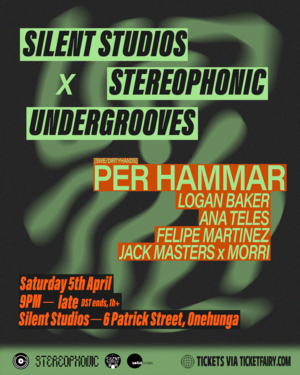

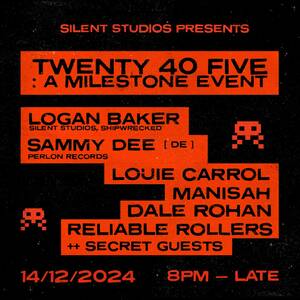
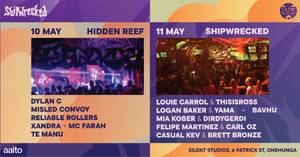

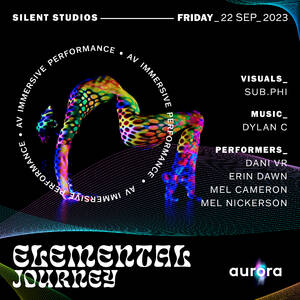
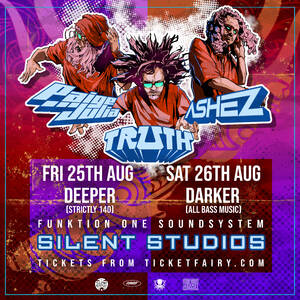
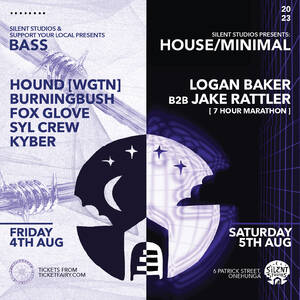
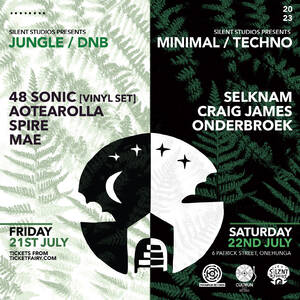
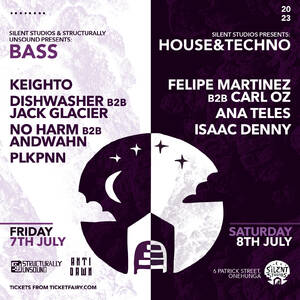
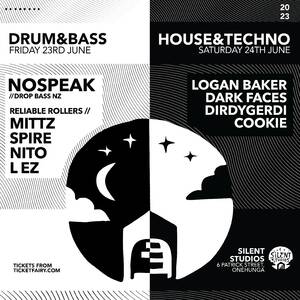
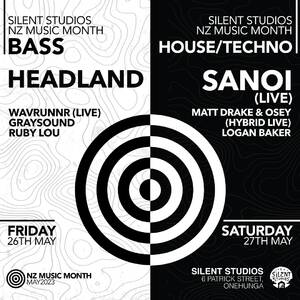
![Neptuno 2nd birthday presents tINI [GER] @ Silent Studios - Event in Auckland](/uploaded/thumbnails/db_file_img_70986_300xauto.jpg)
